Rituals are actions that require few words. They enable us to express our feelings or convey ideas and messages. In the realm of the sacred and in the mundane context of daily culture, consciously designed artifacts enhance the effects and accentuate the meanings of rituals. Here are a few examples: clothing, jewelry, sculptural vessels, an espresso machine, and the complete furnishings of a chapel.
Michael Ernst
Bechstedtstraß / Germany / mobiles-eisen.de
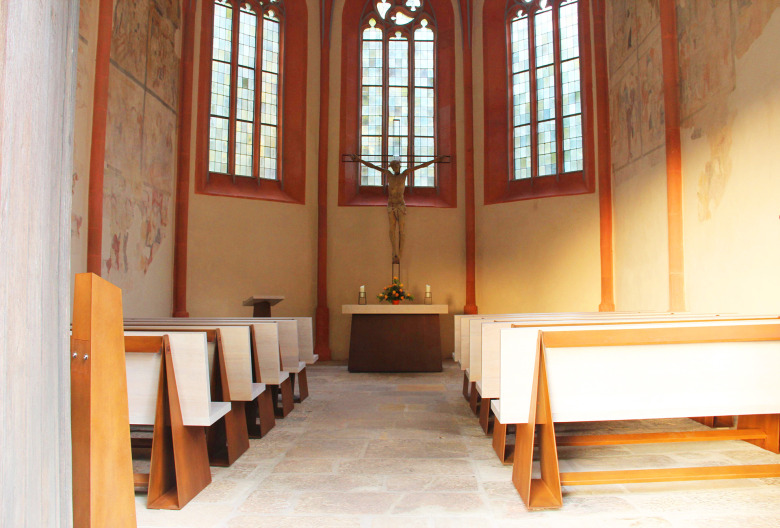
Altar, ambo, cross for the historical figure of Christ, stands for baptismal basins, offertory, altar candleholders, and ten pews.
The sculptor and metalworker intensively studied the Late Gothic period before he designed the utensils for the Liborius Chapel in Creuzburg. The chapel’s small area (11 by 7 m) and low height (9 m) prompted him to give the objects a sleekly simple, upwardly aspiring style. He sensitively responded to the materiality, color, and painting of the historic space. He used sketches, material samples, models in a scale of 1:10 and CAD to illustrate his idea. The result is an exciting dialogue between the Late Gothic period and the constructive simplicity of the Modern era.
Beatrix Schmah
Erfurt / Germany / Facebook: Beatrix-Schmah_Schmuckwerk
Felix Müller
Schielo / Germany / cargocollective.com/felixmueller
Kay Eppi Nölke
Konstanz / Germany / ep-ep.de
Kay Eppi Nölke can imagine grass growing in galleries: “Visitors could cut leaves of grass with a scissors and wrap them around their fingers to make rings—playing with grass like children on a meadow. If someone would like to see this ring in gold, I can make that wish come true,” says the designer from Konstanz. The idea with the grass rings has fascinated Kay Eppi Nölke for many years. His concept involves uniquely winding a blade of grass and then transforming it into metal. The leaves of grass burn away during the elaborate casting technique that’s used to fabricate these wrapped grass rings. Diverse variations have been created in the meantime. Some are wrapped rings of grass, which serves as the basis for the mold for each unique ring. Nölke photographs the original grass ring before casting an identical metal ring. These rings are available in iron, in silver with remnants of plaster from the casting process, in traditional silver, and in stainless steel. Needless to say, the grass rings can also be cast in various gold alloys. Nölke also makes serial reproductions of beautifully wrapped grass rings. A question arose for him in this context: “Even if the reproductions are fabricated with the same excellent craftsmanship as the original, doesn’t the sheer fact of multiplicity necessarily involve a loss of quality?” Experience has shown that his clients have no problem with rings from serial production, which they probably prefer because of the lower price. “My clients are delighted and they often laugh out loud. It seems that this ‘loss of quality due to reproduction’ isn’t important to them, although I always call it to their attention,” Kay Eppi Nölke says.
Barbara Perrakis
Piraeus / Greece / Facebook: Miaou-Niaou
Christof Lungwitz
Leichlingen / Germany / lungwitz.info
![Fünf Schalen für 5 Ringe einer Hand [ Five shells for 5 rings of a hand ]. Wood, mixed media, base tile painted, 75 × 24 × 55 cm. Foto Brigitte Lerho.](https://artaurea.com/wp-content/uploads/2014/10/schale-5-780x528.jpg)
Fünf Schalen für 5 Ringe einer Hand [ Five shells for 5 rings of a hand ]. Wood, mixed media, base tile painted, 75 × 24 × 55 cm. Foto Brigitte Lerho.
Alexandra Bahlmann
Munich / Germany / alexandra-bahlmann.de
Alexandra Bahlmann has been making chains for more than twenty years: inventive, variable, and elegantly understated. This Munichbased goldsmith pays particular attention to the wearability and the fair prices of her pieces of jewelry. The imaginative use of moveable elements, which she continually varies to create new surprises, is characteristic of her work. A silver band gently surrounds luscious Tahitian pearls in her new Squiggle necklace, which is available in individual variants.
Corinna Bianca Dolderer
Baienfurt / Germany / corinnadolderer.de
Vivian Hackbarth
Düsseldorf / Germany / vivian-hackbarth.de
Corinna Heller
Schwäbisch-Gmünd / Germany / corinnaheller.de
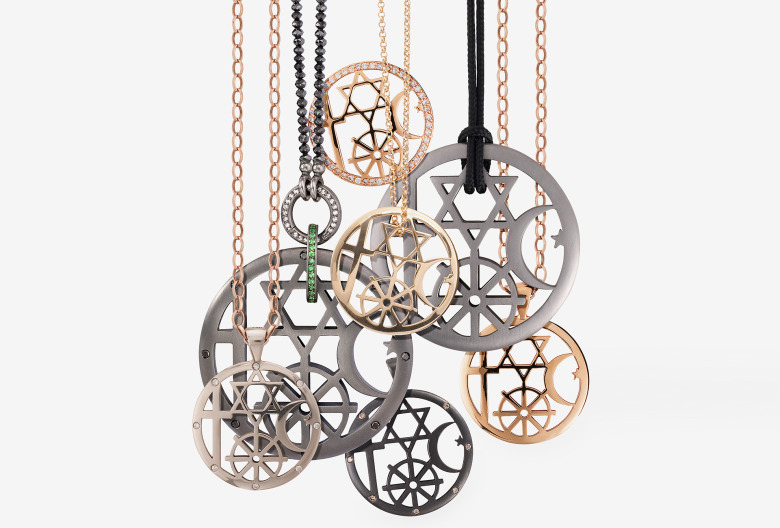
Pendant Unita, vier Weltreligionen im Einklang. Red gold, yellow gold, rhodium-plated silver, tsavorites, brilliants. Photo Barbara von Woellwarth.
Appeared in Art Aurea 4–2014
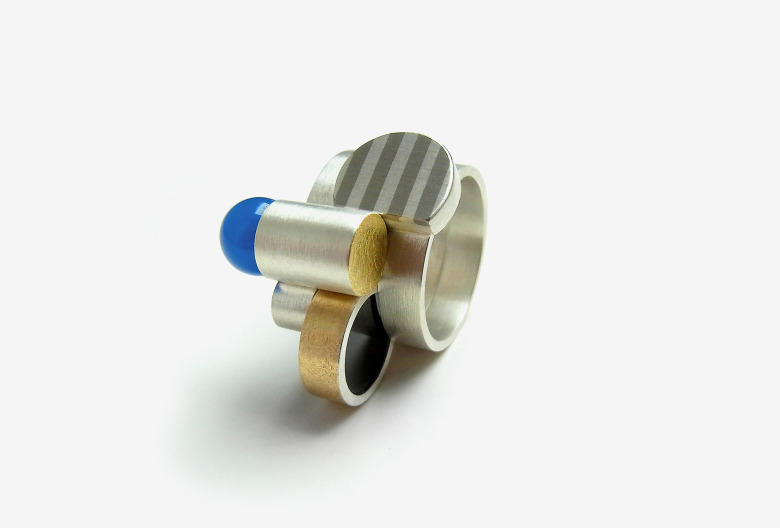
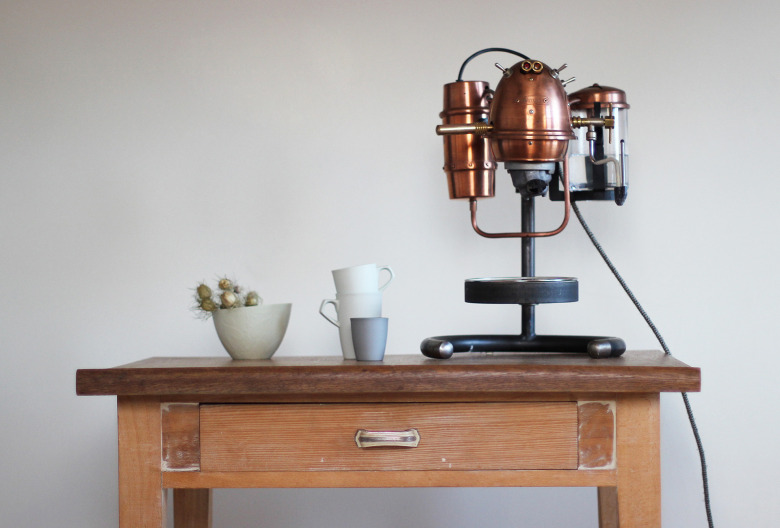
![Ring Grasunikat [ grass unicum ]. Silver, plaster remnants.](https://artaurea.com/wp-content/uploads/2014/10/003_Grasunikat_Ag_mit-Gipsresten_009-780x528.jpg)

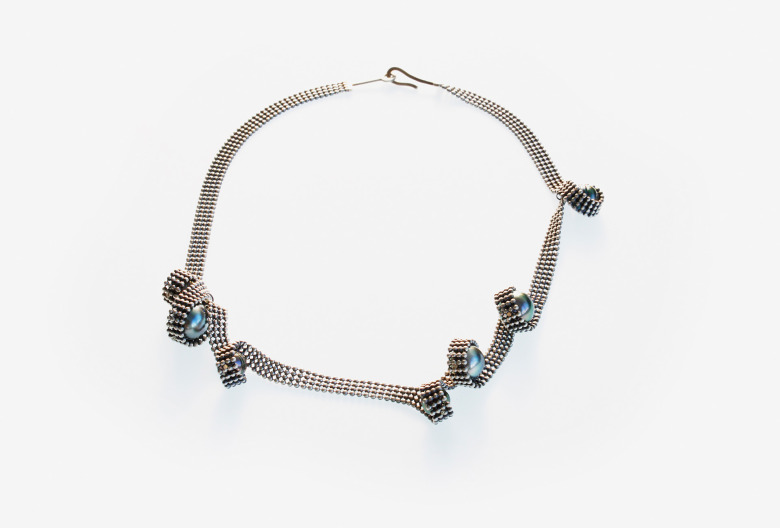
![Necklace Motivierte Zeichen – Kreuz [ motivated characters – cross ]. 750 gold.](https://artaurea.com/wp-content/uploads/2014/10/Motivierte-Zeichen-Kreuz-Gold-750-780x528.jpg)
![Dress Klassiker [ classic ] and scarf smt. Dress. Scarf. Photo Bernd Nörig.](https://artaurea.com/wp-content/uploads/2014/10/Vivian-Hackbarth-372x550.jpg)